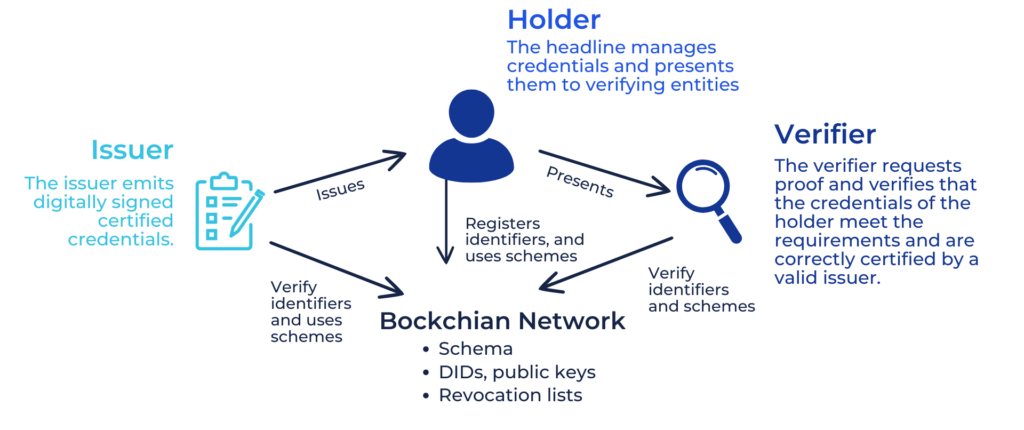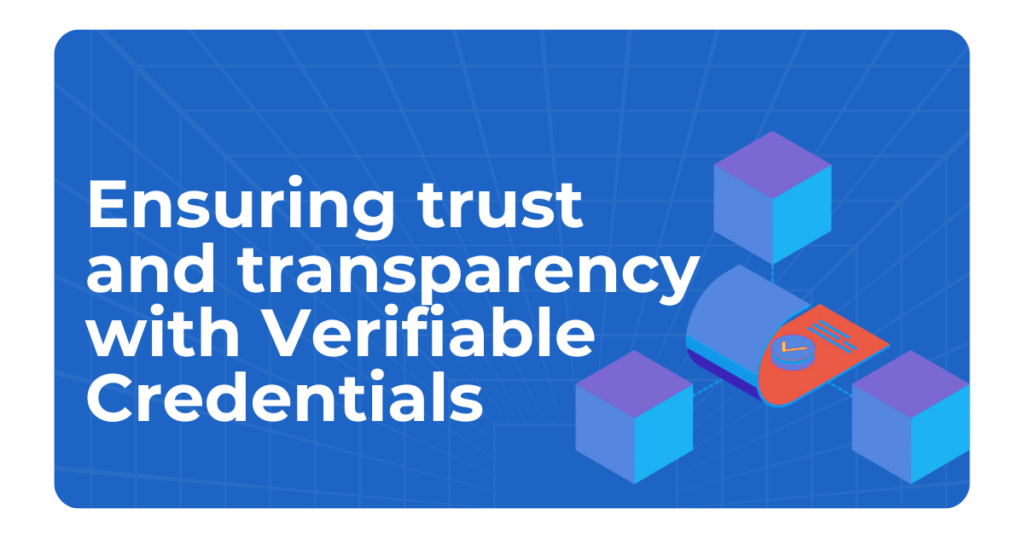Verifiable Credentials in PortWaste II: Ensuring Trust and Transparency
El aseguramiento de la trazabilidad de los residuos en entornos portuarios es fundamental para la gestión eficiente de estos recursos. En este contexto, PORTWASTE® propone de forma innovadora, la implementación de credenciales verificables respaldadas por la blockchain technology.
These credentials play a crucial role in certifying the origin of waste generated onboard ships, providing confidence and transparency at every stage of the transformation process.
In this brief article, we will explain how PORTWASTE® utilizes blockchain-enabled credentials to ensure the authenticity and integrity of data related to waste discharges generated onboard ships during navigation and their subsequent transformation until reintegration.
How do we achieve this?
Uno de los elementos centrales de la segunda fase del proyecto PORTWASTE® es la implementación de un digital product passport, mediante credenciales verificables que registran los datos de la descarga de residuos (buque, día, hora, tipo de residuo, peso…).
In this context, a verifiable credential refers to a set of data issued by an entity (organization, individual, government, etc.) that can be digitally transferred from a sender to a receiver. In the case of PORTWASTE®, we create a credential for each waste discharge, digitally signed by its issuer to provide trust. The issuer's signature must be unique, and PORTWASTE® is also capable of facilitating this digitally encrypted signature using blockchain technology.

Verifiable Credentials: Key to Data Authenticity and Integrity
By registering a verifiable credential on the blockchain network, we make it immutable, meaning it cannot be altered or deleted without leaving a visible trace. This ensures that any changes made by certifying entities are permanently recorded and visible to all stakeholders. Therefore, combining blockchain with verifiable credentials brings transparency to the information conveyed by each credential. Furthermore, whenever a certifying entity issues a credential on the blockchain, it is publicly recorded, providing transparency on who issued the credential and when. This enables stakeholders to verify the authenticity of the credential and the legitimacy of the issuing entity.
The immutability of credential information stored on the blockchain allows for the validation of its integrity. This ensures that the data stored existed at a specific moment and was not created or altered later. All issued credentials are stored in blocks, generating proof of their existence saved on the blockchain. This proof consists of encrypted data that allows anyone with access to the credential to verify its integrity and accuracy of the stored data.
Storing information in the form of verifiable credentials also allows for demonstrating authorship, i.e., who created it. Therefore, when issuing a credential, it is digitally signed using a private key known only to the issuer. The digital signature is generated using a cryptographic algorithm that utilizes the issuer's private key to create a unique and specific digital seal for that credential. Additionally, anyone wishing to verify the credential's authenticity can use the issuer's public key to verify the digital signature. If the signature matches the credential and verifies correctly using the issuer's public key, it can be demonstrated that the credential was issued by the holder of the private key corresponding to that public key.
In summary, this innovative approach provides a robust solution to waste management challenges in port environments, offering confidence and transparency in the transformation of these resources.
Experts in digital innovation at your service
Discover how Blue Room Innovation transforms ideas into digital solutions with real impact and commitment to sustainability.
Are you ready to be part of the change?
Follow us
Copyright © 2024 Blue Room Innovation Privacy Policy - Legal Warning - Cookies Policy

